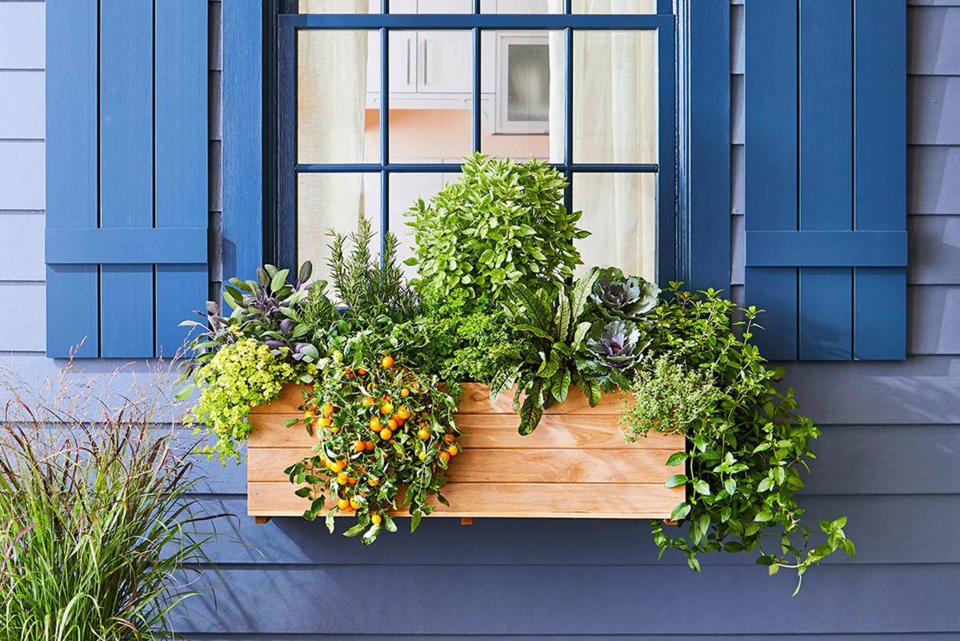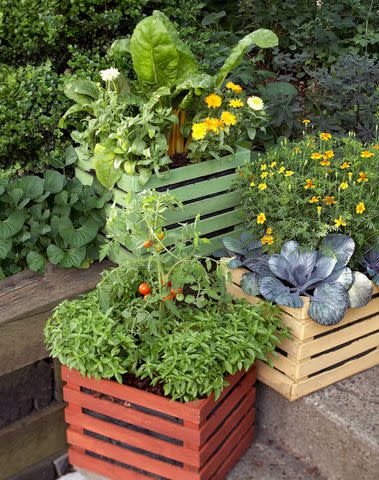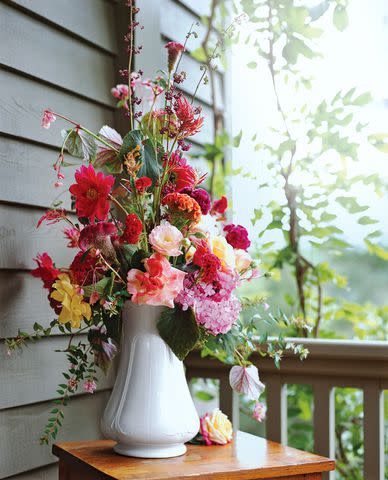If You Can't Manage a Garden, These 5 Alternatives Provide Similar Mindfulness Perks
Gardening is a commitment—here's what you can do if you can't fully make it.

Carson Downing
For many, gardening isn’t just about creating an aesthetic yard or landscape—it also sparks joy and functions as a creative outlet. Whether you treat it as a fun hobby or a form of meditation, there’s no doubt that gardening provides many benefits for your wellbeing. That said, growing and maintaining a garden is no small commitment. It requires time, dedication, and physicality that not everyone can manage. And for those who live in residences like apartments or condos, having a full garden isn’t possible.
Whatever the circumstances, if you are seeking the mindfulness benefits of gardening but can’t manage an entire garden, you don’t have to miss out entirely. According to experts, here are a few creative ways to get your gardening fill without a garden.
Related: 10 Balcony and Rooftop Garden Ideas for Creating a Serene Space
Start a Windowsill Herb Garden
If you have a sunny windowsill in your home, you're perfectly set up to start an herb garden. Growing herbs indoors lets you dip your toes into gardening without dedicating an abundance of time and energy. Plus, just like growing your fruits and vegetables, you’ll be rewarded with a bountiful harvest of fresh, aromatic herbs you can use around your home.
“The herbs can be used for cooking or brewing teas, which have a wide variety of wellness benefits for both your mind and body,” says Nancy Awot-Traut, horticulture expert at Burpee Gardening.
Herbs prefer several hours of bright, direct sunlight each day, so choose the sunniest window in your home (south-facing windows receive the most). If you lack natural light, consider growing your herbs under a grow light.

Try Container Gardening
Container gardening involves growing plants outdoors in pots, raised garden beds, or large planters, making it ideal for those who want to try their hand at gardening without maintaining a full-scale garden or live in homes with limited outdoor space. Plus, it’s extremely versatile and suitable for a number of different kinds of plants.
“Container gardens can be anything from one or two pots to larger fabric and wood planters, allowing you to control the size of your garden based on how much you’re able to manage,” Awot-Traut says.
Related: The 14 Best Raised Garden Beds of 2024
Fruit and vegetable plants, flowers, succulents, and even small trees or shrubs can all be grown in containers. Awot-Traut recommends vegetables like peppers, peas, squash, radishes, tomatoes, garlic, cucumbers, and lettuce, and fruits like blueberries and figs.
If you're looking to create a colorful and aromatic flower container garden, zinnias, nasturtiums, marigolds, pansies, begonias, impatiens, and mums are just a few popular choices.
You can easily find small pre-planted container gardens at your local nursery or garden center or start from scratch with your seedlings and planters, depending on your available time and energy.
Bring Gardening Indoors with Houseplants
If you don’t have the space for a garden outdoors, why not bring some greenery inside your home with houseplants? Indoor plants are great for nurturing a connection to the natural world without a big time and energy commitment. Plus, caring for houseplants is a great year-round hobby, since they won’t be disturbed by cold fall and winter weather.
"It's cathartic to get your hands in soil, even if it's a single potted plant in your home," says Carlie Paluzzi, Co-Founder & COO at BWH Plant Co.
You have a wide range of houseplants to choose from depending on your experience level and the light conditions in your home: Paluzzi says beginners and those without a lot of natural light in their homes should go for low-maintenance plants like ZZ plants, pothos, and snake plants. If you’re up for more of a challenge, you can try some rarer and more coveted houseplants such as the Monstera Thai constellation, Philodendron pink princess, and more.
Related: 7 Tough-to-Grow Houseplants that Are Worth the Effort
Plan a Trip to Your Local Nursery
Step inside a lush, tropical oasis by planning a trip to your local nursery or garden center: You get the benefits of being surrounded by plants without adding any to your own space and the chance to discover explore a variety of types. It could be what inspires you to start a container garden, houseplant collection, or windowsill garden of your own.
“I like to visit plant nurseries in the early spring because it gives my spirit a boost for the promise of what's to come as the weather warms," says Marci Bonner, an associate at Richardson & Associates Landscape Architecture in Washington, D.C. "You don't need to buy anything but I find it hard to resist purchasing another glazed porcelain pot or plant that early in the season."

Create Your Own Floral Arrangements
If you love the idea of a cutting garden but don’t have the means to maintain one of your own, foraging may be your answer. Laura Walsh, director of marketing at Oasis Forage Products says creating floral arrangements through foraging allows you to reap mindfulness benefits without managing an entire garden.
“Simply start by gathering your favorite wildflowers and unique foliage stems from your own backyard or community space that allows picking, then bring your treasures home to create a one-of-a-kind floral arrangement for your dining room table, entrance, or bedroom," she says. "Not only does this activity allow you to appreciate nature and breathe fresh air outdoors, but it also brings the beauty of nature’s treasures into your home, offering a holistic experience for the body and soul."
For more Better Homes & Gardens news, make sure to sign up for our newsletter!
Read the original article on Better Homes & Gardens.

